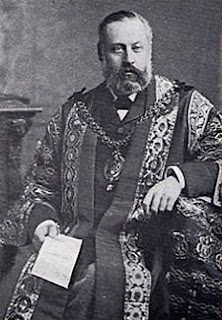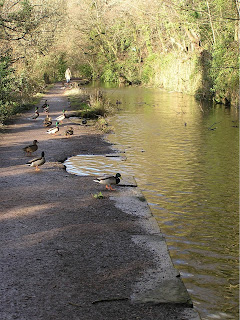
Its fairytale appearance belies the history that the building contains in its stones. There has been a fortress on the site since the end of the 11th century when an earth and timber motte castle was built there by Norman lords to defend their land. Both Ifor Bach and Gruffud ap Rhys are two Welsh rulers of Senghennydd whose names are linked to the castle.
During the 13th century, the de Clare family, the Norman lords of Glamorgan made great gains against the Welsh in the upland regions of their disputed territory. It was during this time that it is thought the castle was reconstructed into a stone one, with a small oval courtyard with three circular towers. It was probably Gilbert de Clare (the builder of Caerphilly Castle) who added the towers in the 1280s. It is the spur buttresses at the base of the round towers that suggest it was of Norman design, but it seems that the castle was abandoned in 1316 after Llewellyn Bren led an army against the de Clares in 1316. It was never repaired and the castle fell into ruin.
In 1872, Bute began his project of Castle Coch by asking Burges to look into the possibility of restoring the castle. Burges produced the report and work began in 1875. The castle was to be transformed into a summer home for the Marquess. The restoration was a complete one, but Burges was not to see the finished article. He died in 1881, ten years before completion of the work. His detailed drawings of the interiors allowed his team of craftsmen to complete the task without him. It took sixteen years for the castle to be transformed into the building we know and recognise today.
The castle may have an authentic medieval look to the exterior but the interiors are Victorian fantasy, richly decorated and highly imaginative. After a visit to Castell Coch, it is worth visiting nearby Cardiff Castle to see the ultimate example of the collaboration between Lord Bute and William Burges. At the time of completion, the castle represented a medieval structure, but it did have all the modern conveniences of its time - flushing toilets, central heating and a working kitchen made it habitable. Burges also left behind some justifications for his use of the conical towers, which some historians question for authenticity. Burges wanted them simply for visual effect.
The Keep Tower, the Well Tower and the Kitchen Tower incorporate a series of apartments; of which the main sequence, the Castellan's Rooms, lie within the Keep. The Hall, the Drawing Room, Lord Bute's Bedroom and Lady Bute's bedroom comprise a suite of rooms that exemplify the High Victorian Gothic style in 19th century Britain. However some of the poorer interior decorations can be attributed to work carried out after Burges' early death in 1881. Some of the painted decoration is based on patterns found in Welsh castles. The Drawing Room and Lady Bute's bedroom have ceilings and wall paintings that are almost equal to the best achieved at Cardiff Castle.
The decoration and even the smallest details - such as the door handles and the window latches were carefully considered. Even some of the walls feature paintings of various animals, including birds, monkeys and squirrels, as well as mythological beings.
The uppermost story of the Keep Tower holds Lady Bute's Bedroom, painted in brilliant colours with gilt and mirrors lighting up the double-domed chamber. Apart from the large bed, the furniture in Lady Bute's Room is simplistic and uncomfortable - a result of Burges determination to keep true to the medieval character of the castle.
In 1950, the 5th Marquess of Bute placed the Castle in the care of the Ministry of Works. It is now administered by CADW on behalf of the National Assembly for Wales.
Castell Coch has made numerous appearances in TV and film productions. Drivers can also spot the magical- looking castle from the M4 as they pass the Coryton Interchange.

Important Musical Event In Portland On September 4th - Cor Godre'r Aran at NAFOW
By Ceri Shaw, 2010-08-11
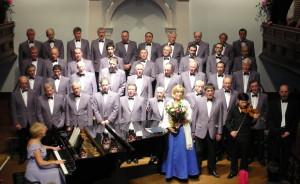
Details:- The Concert is on Saturday 4th September between 7 and 10 pm at the Doubletree Hotel, Lloyd Center, Portland. Tickets have been discounted to $20 and are available in the hotel foyer before the performance. Following the concert the choir will be at the pub night in the bar at the Doubletree.
For more information contact Janet Figini @ jpfigini@cascadeaccess.com
From the WNGGA website:- "The forty-six member choir was formed in 1949 in Llanuwchllyn, a village nestled between the shores of Llyn Tegid (Bala Lake) and the Aran mountain, which stands majestically above. It is an area steeped in history, literature and music. Llanuwchllyn retains a firm Welsh identity in a modern and vibrant Wales, and its inhabitants are almost all Welsh speaking. The choir has travelled extensively, to Canada, the U.S., Argentina, Brazil, Hong Kong, Singapore and Portugal. In November 2003 it visited New Zealand for the 3rd time and Australia for the 7th. In 2005 and 2006 it participated in Saint Patricks Day celebrations in Macroom, County Cork, and returned to Patagonia in the autumn of 2007. Cr Godrer Aran has achieved repeated success in Male Choir competitions; between 1989 and 1993, it won four victories at the National Eisteddfod of Wales and, in 2001, returned to the National Eisteddfod and triumphed once more. Cr Godrer Aran won first prize at the International Eisteddfod at Llangollen in 1996, 2000, 2005 and 2008, and won the BBC Radio Cymru Male Choir of the Year competition in 2005. A new CD, Cofio, was released in the summer of 2009. The choir has shared platforms with the Bands of the Royal Marines, Grenadier Guards, Royal Scots Guards, Pipes and Drums, and has welcomed renowned international guest artists to perform with it. Singers are from farming and various rural occupations and are held together by a strong bond of friendship and a love of singing. In addition, the choir has its own talented soloists whose contributions
are invaluable."
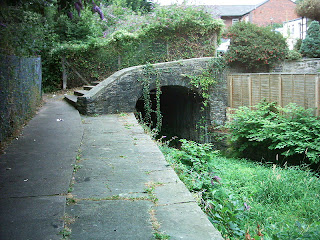 |
| GFDL Former tunnel of the Glamorganshire Canal at Pontypridd, behind the Bunch of Grapes pub. Photo taken by User:Varitek July 2005) |
My mother was bedridden and no-one remained of the familys older generation to speak to her in Welsh so I decided to learn the language with her in 1994. When my mother died I promised myself that I would continue to learn to speak and write in Welsh.
In 2001 Susan won the Learners Chair in the National Eisteddfod with the poem Yfory , which is included in this book along with several poignant and honest poems which discuss her childhood and life and topical issues such as open-cast mining. The poems look at the scars left behind on the landscape by the heavy industries of the area,
Three coal mines employed 3,000 miners in the Maesteg area and some of the poems look at the beauty which has returned to these valleys.
Her Welsh tutor, Morgan D Jones, has clearly made an impression on Susan as she has written a poem especially for him and he has written the foreword for this volume. Susan May was a lecturer in midwifery prior to her retirement. In order that Welsh learners can enjoy the poems she has included a vocabulary for each one. Cerddir Galon is sure to enrich the experience of learning the Welsh language, and will appeal to learners of different standards and Welsh speakers alike. The price of Cerddir Galon , which is part of the Golau Gwyrdd (Green Light) series by Y Lolfa, is 4.95.
David Western's Portland Eisteddfod Lovespoon: Dave is done! : "Well, I think I am just about done. I had a good day yesterday and managed to get most of my part seen to. There might be a couple of..." more here
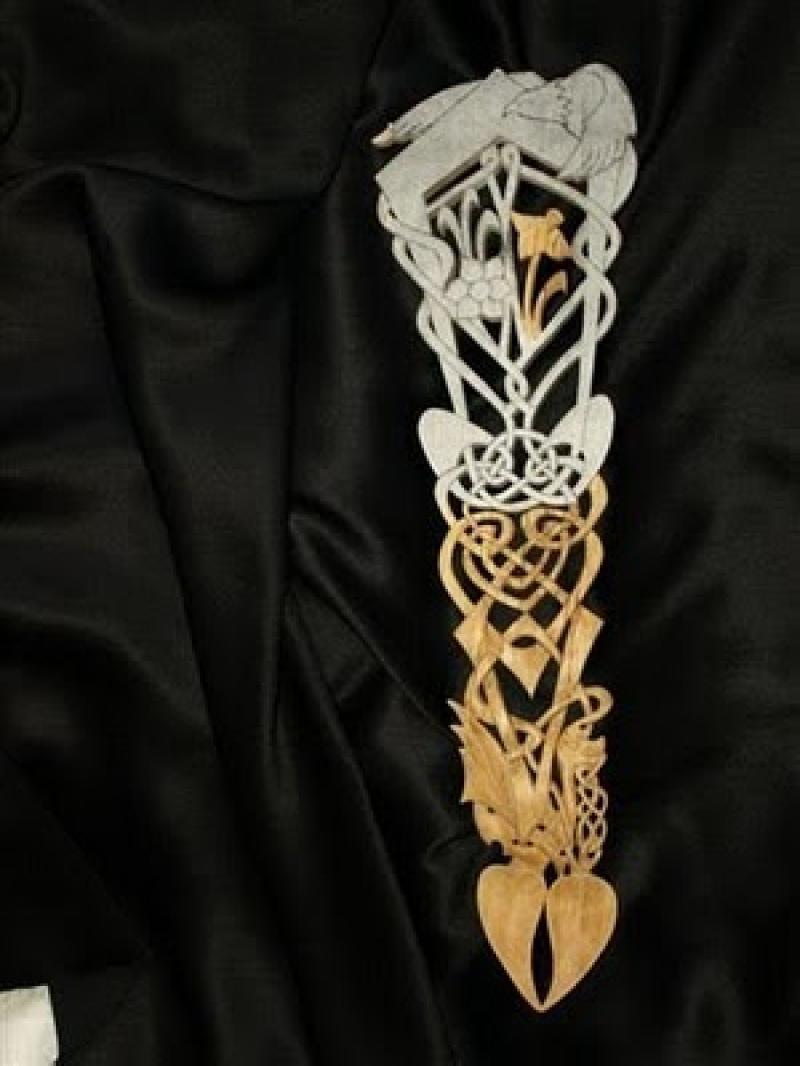
 |
| Image by w:User:Dave souza License CC Attribution-ShareAlike 2.5 |
 |
| Image by Arthur Webster |
Campbells struggled on with various motor vessels including MV Balmoral, before it too finally succumbed to the economic pressure and the Channel finally fell silent in 1980. It seemed that the Bristol Channel would never hear the beat of paddles on water again. However, in 1974, the Scottish arm of the Paddle Steamer Preservation Society had bought paddle steamer Waverley for the sum of just 1. Looking to increase her financial horizons beyond the Clyde where she was based, they brought the last sea-going paddle steamer in the world to the Bristol Channel for a few weeks in early 1979. She was received with great delight.
















